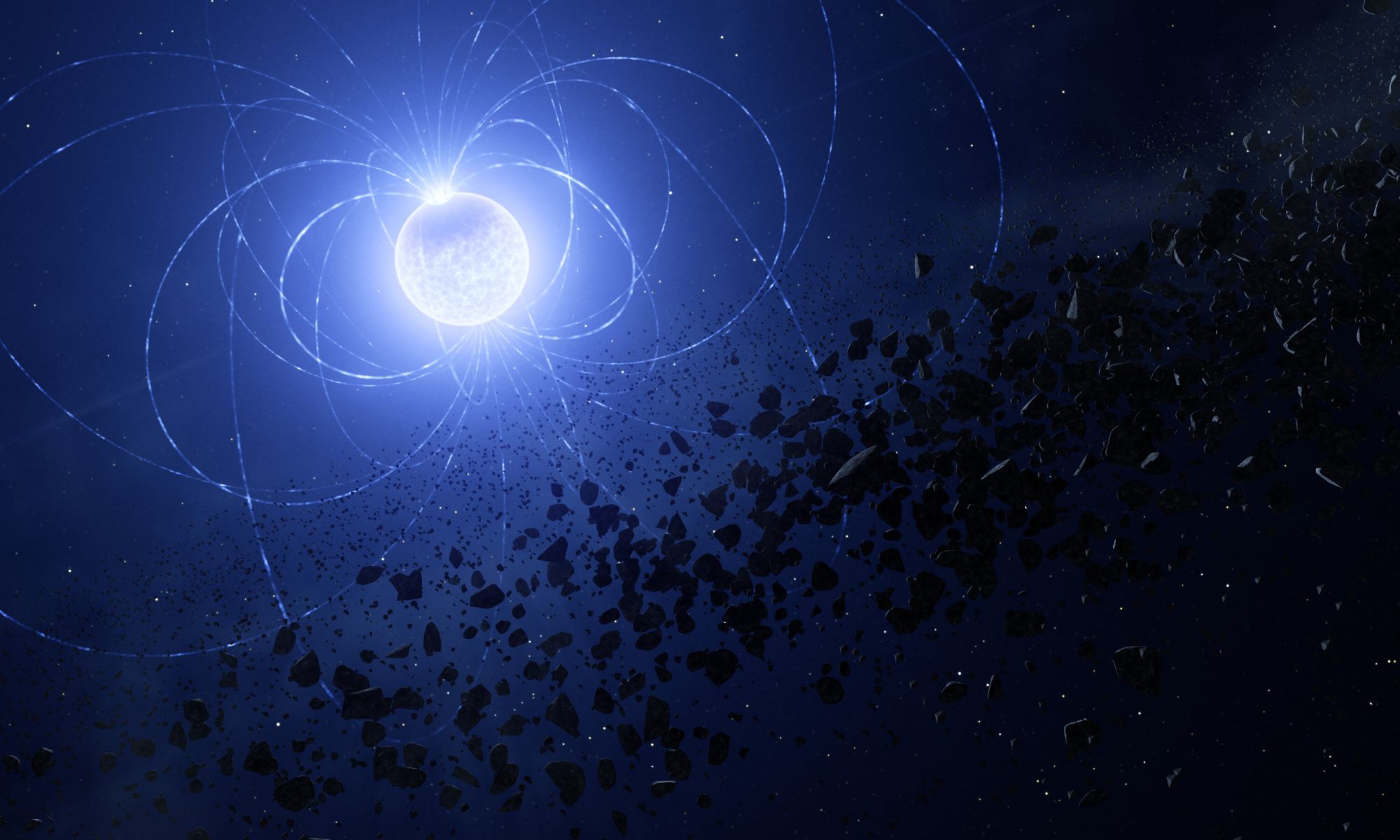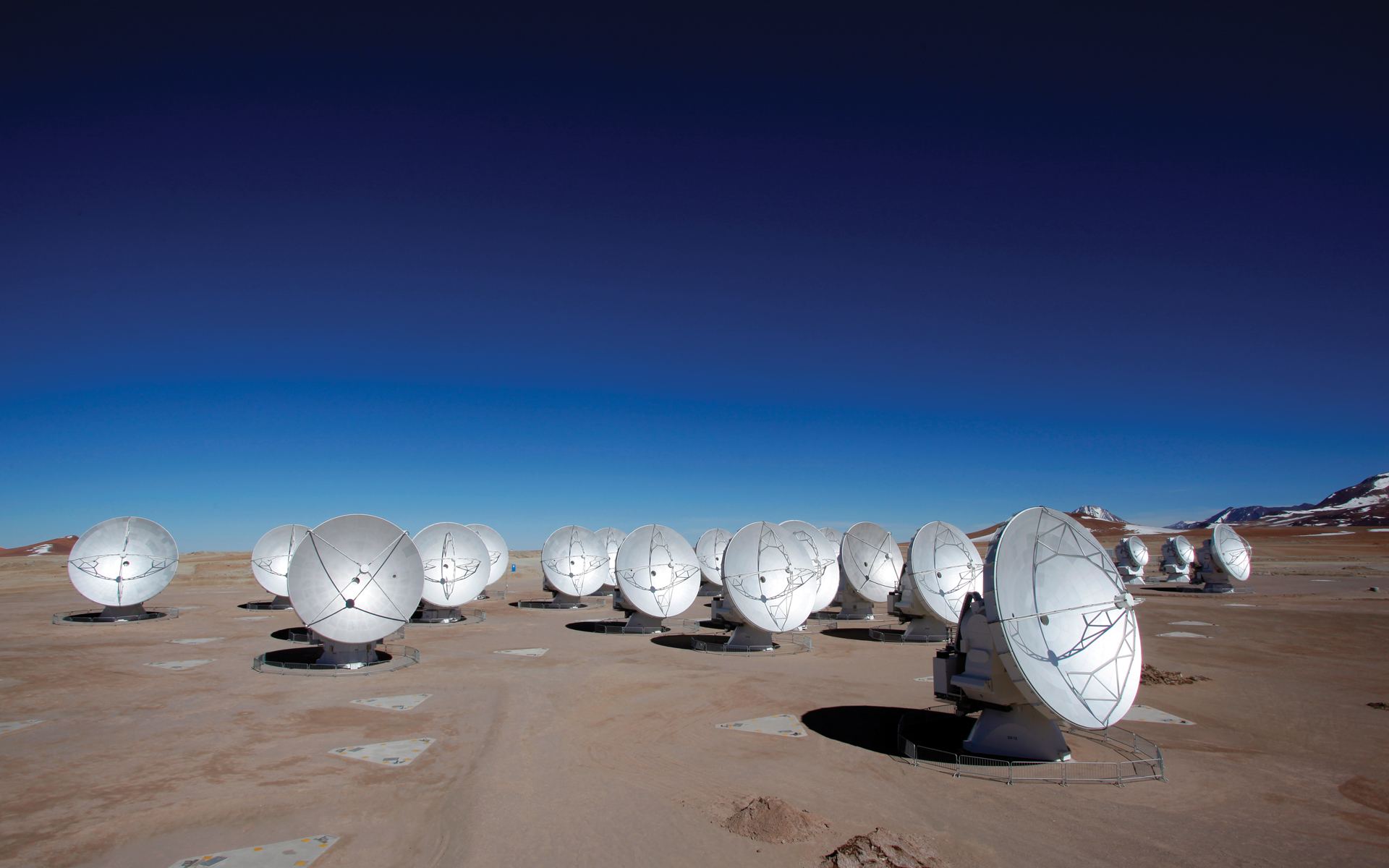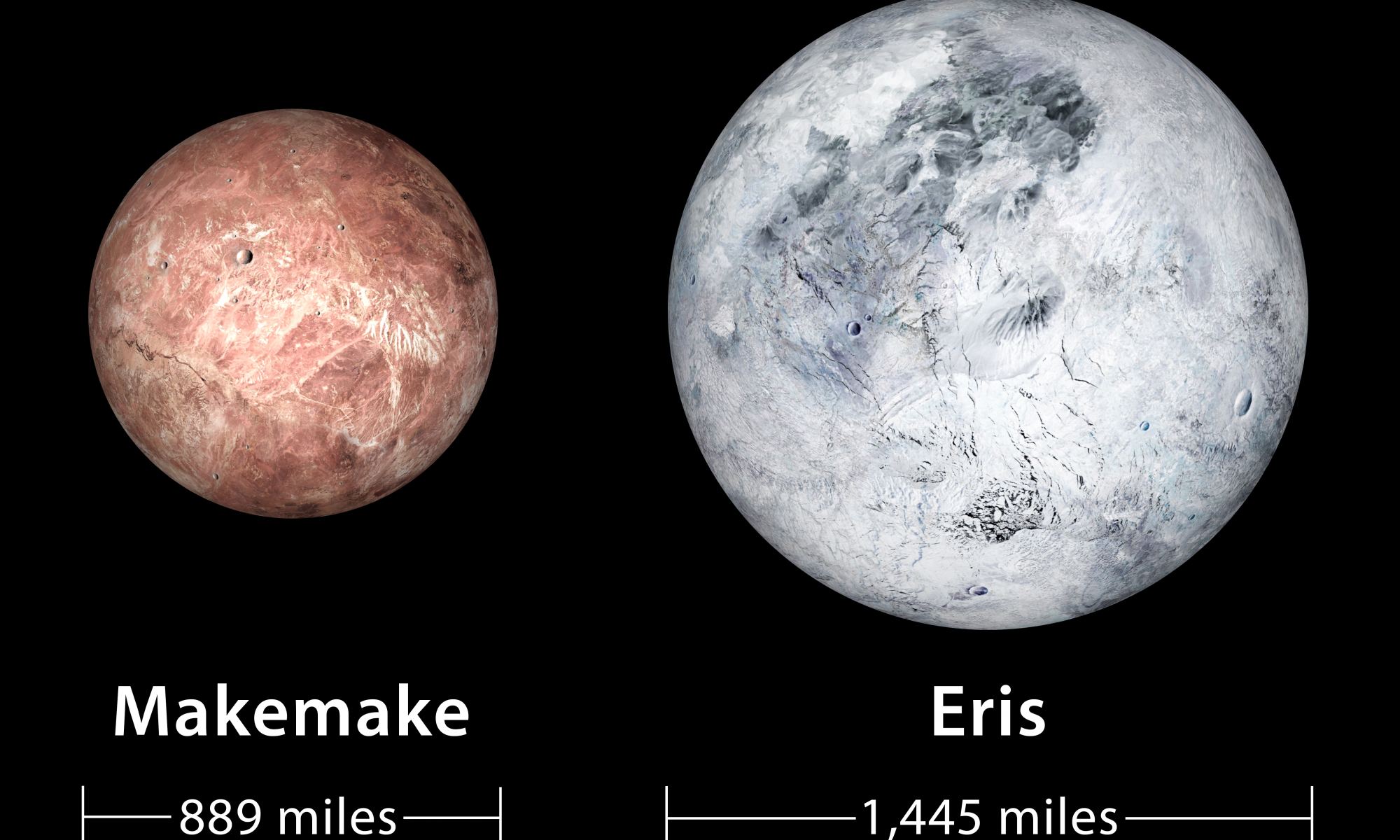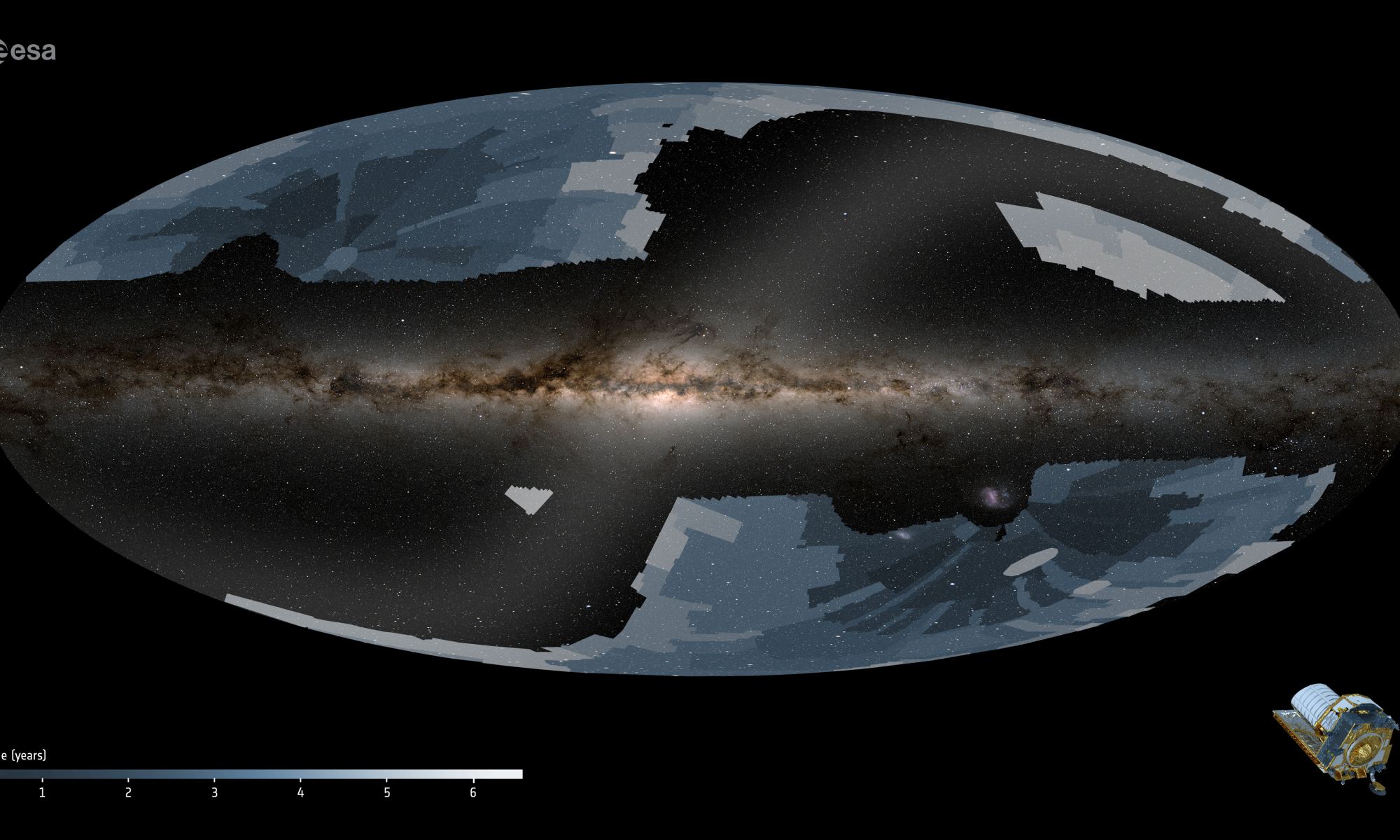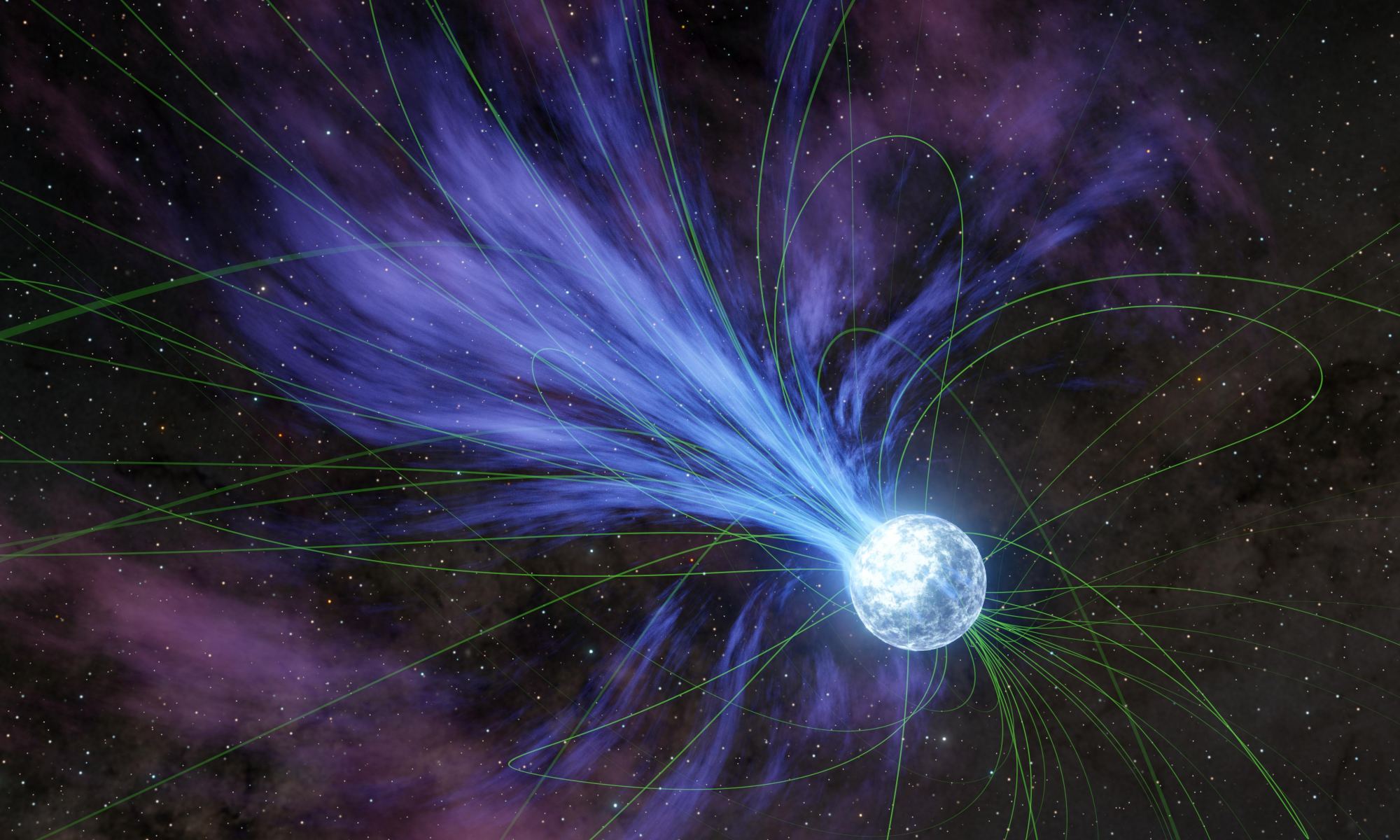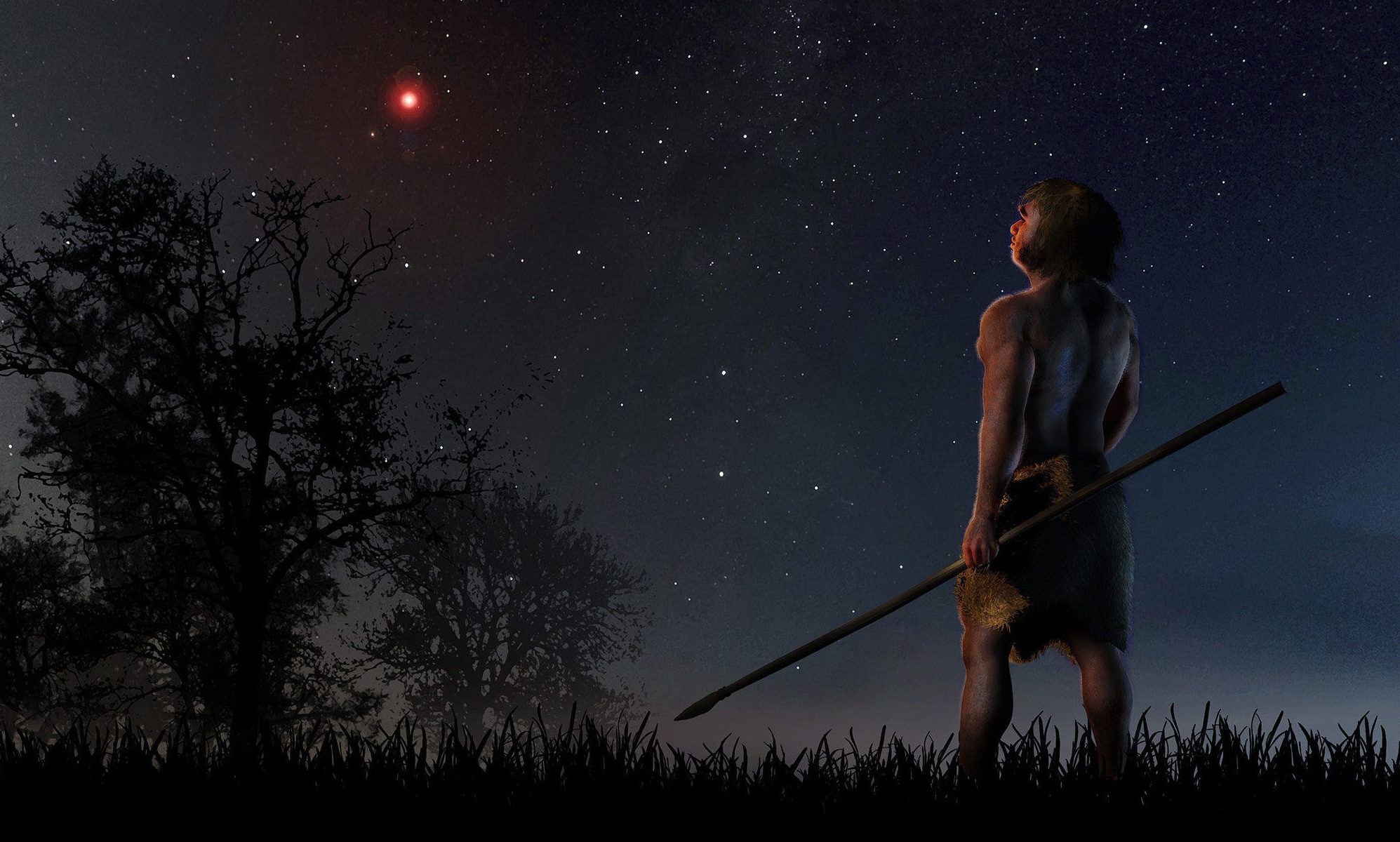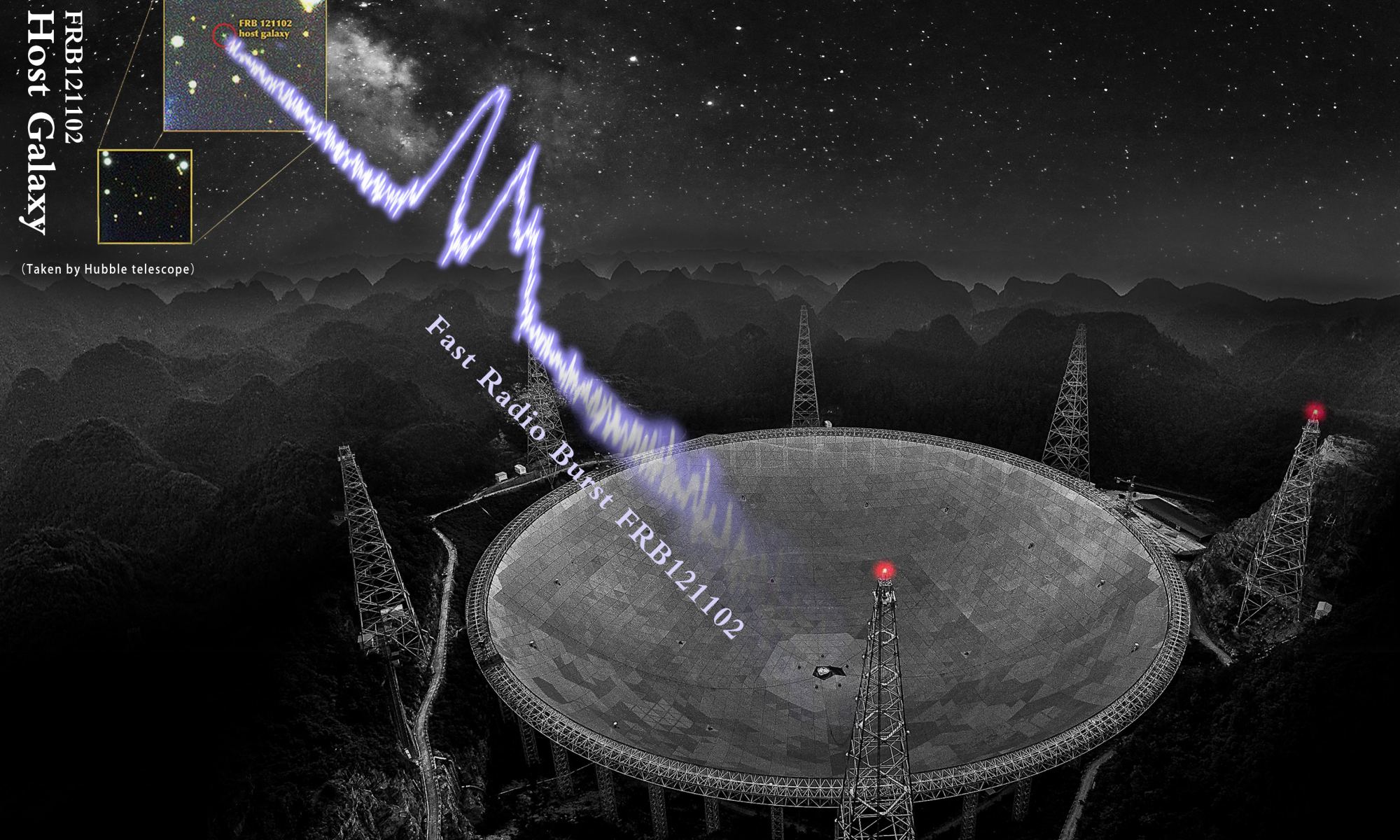Nothing is immortal. Everything has a finite existence, including the stars themselves. How a star dies depends on several factors, most importantly their mass. For the Sun, this means that in several billion years it will swell to a red giant as it churns through the last of its nuclear fuel. The core that remains will then collapse to become a white dwarf. Of course, the Sun is home to several planets, including Earth. What of their fate? What of ours? According to a recent study, the Sun’s death might consume Earth in the end.
Continue reading “Astronomers Can See the Impact Site Where an Asteroid Crashed Into a White Dwarf”Cosmic Dust Could Have Helped Get Life Going on Earth
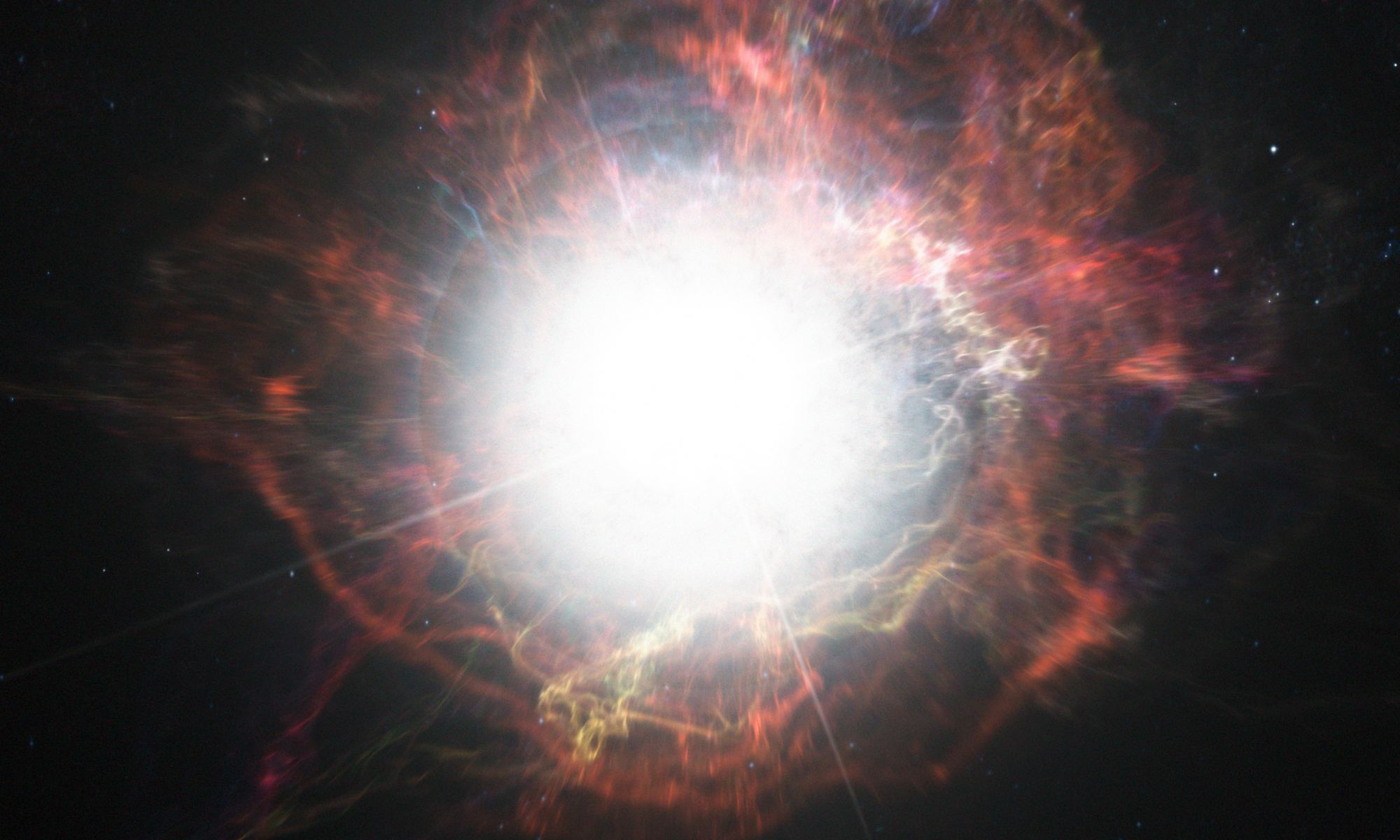
Life on our planet appeared early in Earth’s history. Surprisingly early, since in its early youth our planet didn’t have much of the chemical ingredients necessary for life to evolve. Since prebiotic chemicals such as sugars and amino acids are known to appear in asteroids and comets, one idea is that Earth was seeded with the building blocks of life by early cometary and asteroid impacts. While this likely played a role, a new study shows that cosmic dust also seeded young Earth, and it may have made all the difference.
Continue reading “Cosmic Dust Could Have Helped Get Life Going on Earth”We Could Snoop on Extraterrestrial Communications Networks
The conditions for life throughout the Universe are so plentiful that it seems reasonable to presume there must be extra-terrestrial civilizations in the galaxy. But if that’s true, where are they? The Search for Extra-terrestrial Intelligence (SETI) program and others have long sought to find signals from these civilizations, but so far there has been nothing conclusive. Part of the challenge is that we don’t know what the nature of an alien signal might be. It’s a bit like finding a needle in a haystack when you don’t know what the needle looks like. Fortunately, any alien civilization would still be bound by the same physical laws we are, and we can use that to consider what might be possible. One way to better our odds of finding something would be to focus not on a direct signal from a single world, but the broader echos of an interstellar network of signals.
Continue reading “We Could Snoop on Extraterrestrial Communications Networks”Gravastars are an Alternative Theory to Black Holes. Here's What They'd Look Like
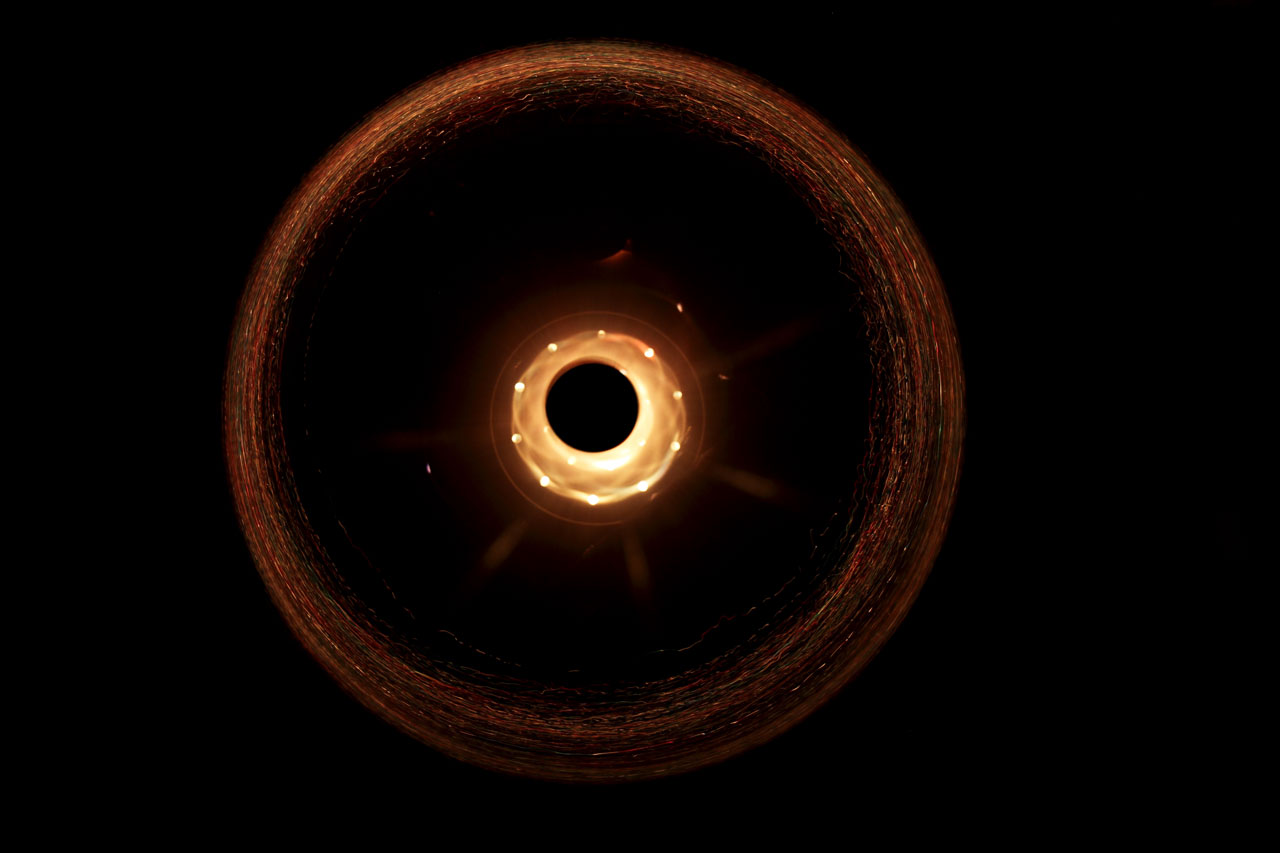
One of the central predictions of general relativity is that in the end, gravity wins. Stars will fuse hydrogen into new elements to fight gravity and can oppose it for a time. Electrons and neutrons exert pressure to counter gravity, but their stability against that constant pull limits the amount of mass a white dwarf or neutron star can have. All of this can be countered by gathering more mass together. Beyond about 3 solar masses, give or take, gravity will overpower all other forces and collapse the mass into a black hole.
Continue reading “Gravastars are an Alternative Theory to Black Holes. Here's What They'd Look Like”Even Eris and Makemake Could Have Geothermal Activity
Whether or not you agree that Pluto isn’t a planet, in many ways, Pluto is quite different from the classical planets. It’s smaller than the Moon, has an elliptical orbit that brings it closer to the Sun than Neptune at times, and is part of a collection of icy bodies on the edge of our solar system. It was also thought to be a cold dead world until the flyby of New Horizons proved otherwise. The plucky little spacecraft showed us that Pluto was geologically active, with a thin atmosphere and mountains that rise above icy plains. Geologically, Pluto is more similar to Earth than the Moon, a fact that has led some to reconsider Pluto’s designation as a dwarf planet.
Continue reading “Even Eris and Makemake Could Have Geothermal Activity”Euclid Begins its 6-Year Survey of the Dark Universe
On July 1, 2023, the Euclid Spacecraft launched with a clear mission: to map the dark and distant Universe. To achieve that goal, over the next 6 years, Euclid will make 40,000 observations of the sky beyond the Milky Way. From this data astronomers will be able to map the positions of billions of galaxies, allowing astronomers to observe the effects of dark matter.
Continue reading “Euclid Begins its 6-Year Survey of the Dark Universe”Another Clue Into the True Nature of Fast Radio Bursts
Fast radio bursts (FRBs) are strange events. They can last only milliseconds, but during that time can outshine a galaxy. Some FRBs are repeaters, meaning that they can occur more than once from the same location, while others seem to occur just once. We still aren’t entirely sure what causes them, or even if the two types have the same cause. But thanks to a collaboration of observations from ground-based radio telescopes and space-based X-ray observatories, we are starting to figure FRBs out.
Continue reading “Another Clue Into the True Nature of Fast Radio Bursts”Passing Stars Changed the Orbits of Planets in the Solar System
The orbit of Earth around the Sun is always changing. It doesn’t change significantly from year to year, but over time the gravitational tugs of the Moon and other planets cause Earth’s orbit to vary. This migration affects Earth’s climate. For example, the gradual shift of Earth’s orbit and the changing tilt of Earth’s axis leads to the Milankovitch climate cycles. So if you want to understand paleoclimate or the shift of Earth’s climate across geologic time, it helps to know what Earth’s orbit was in the distant past.
Continue reading “Passing Stars Changed the Orbits of Planets in the Solar System”Measuring Distances in the Universe With Fast Radio Bursts
Now and then there is a bright radio flash somewhere in the sky. It can last anywhere from a few milliseconds to a few seconds. They appear somewhat at random, and we still aren’t sure what they are. We call them fast radio bursts (FRBs). Right now the leading theory is that they are caused by highly magnetic neutron stars known as magnetars. With observatories such as CHIME we are now able to see lots of them, which could give astronomers a new way to measure the rate of cosmic expansion.
Continue reading “Measuring Distances in the Universe With Fast Radio Bursts”The Event Horizon Telescope Zooms in on a Black Hole's Jet
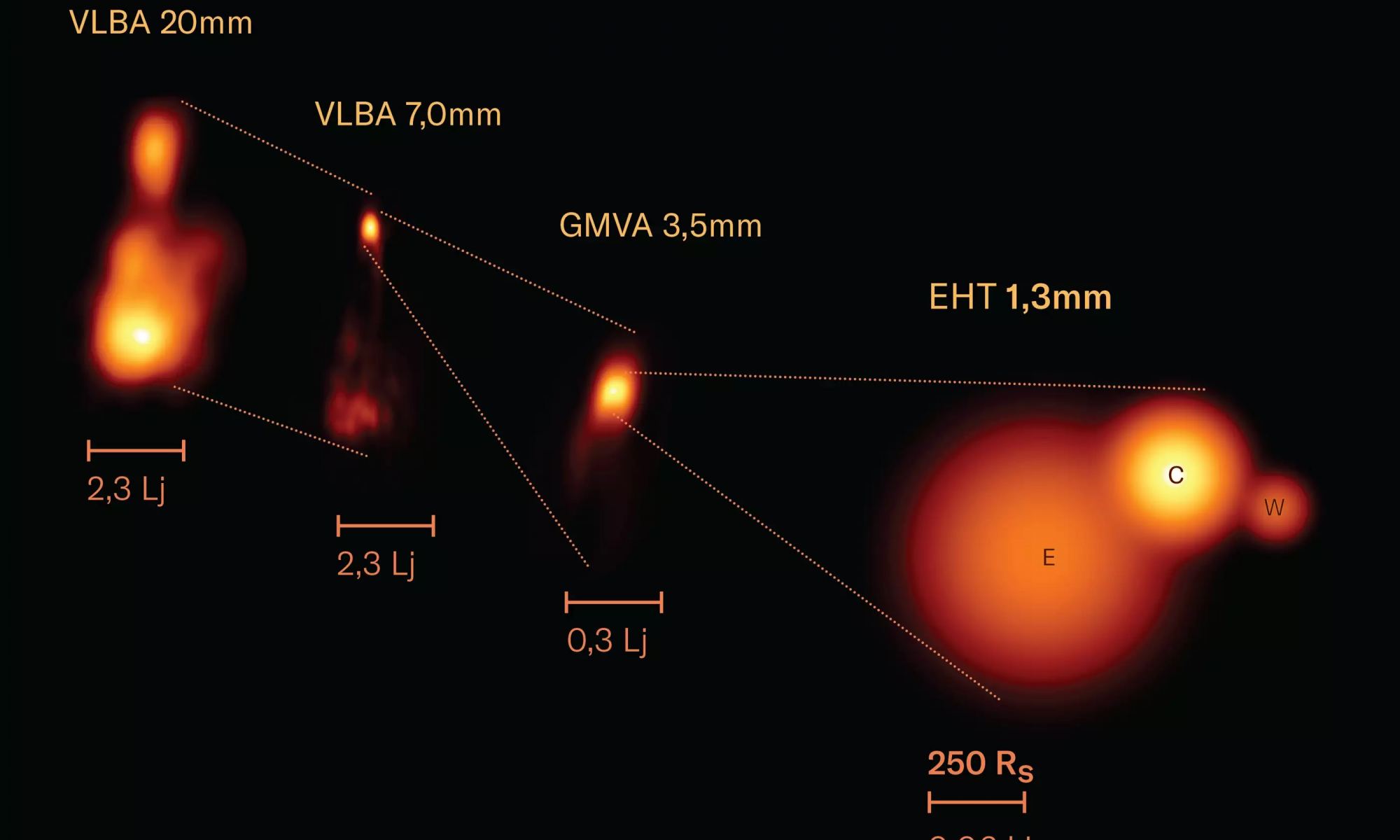
Although supermassive black holes are common throughout the Universe, we don’t have many direct images of them. The problem is that while they can have a mass of millions or billions of stars, even the nearest supermassive black holes have tiny apparent sizes. The only direct images we have are those of M87* and Sag A*, and it took a virtual telescope the size of Earth to capture them. But we are still in the early days of the Event Horizon Telescope (EHT), and improvements are being made to the virtual telescope all the time. Which means we are starting to look at more supermassive black holes.
Continue reading “The Event Horizon Telescope Zooms in on a Black Hole's Jet”
